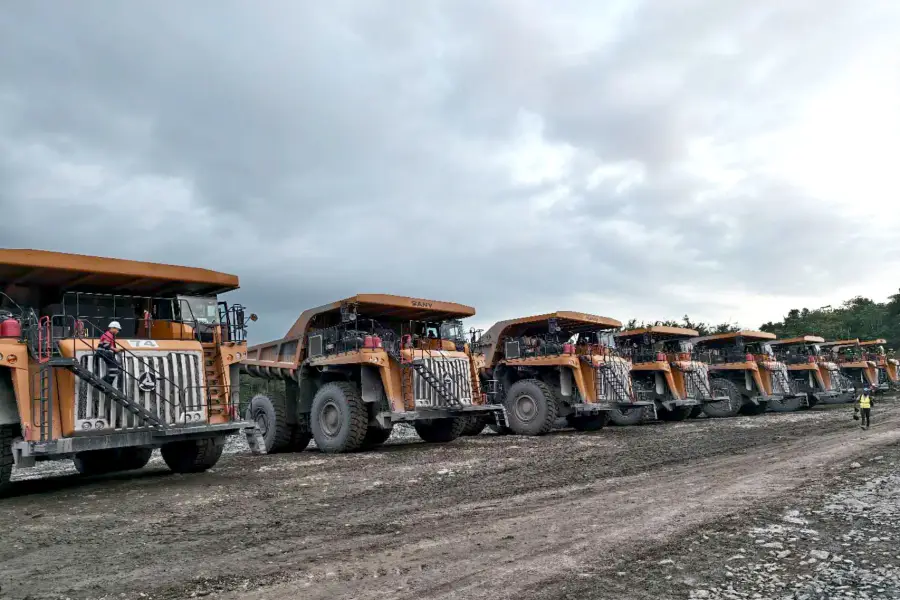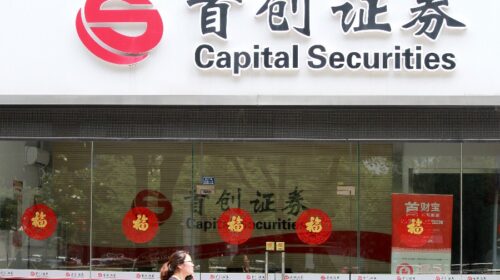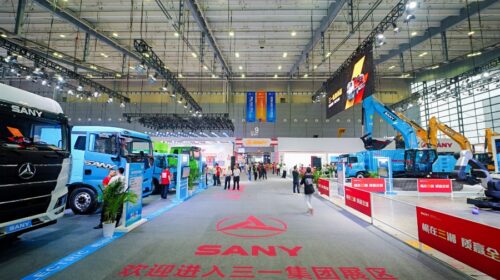Sany hopes Hong Kong investors see it as global high-tech heavy hitter

The heavy construction equipment maker’s IPO is set to become the third largest in Hong Kong this year, raising about $1.5 billion
Key Takeaways:
- Sany Heavy is hoping its rapid globalization story can wow Hong Kong investors, with offshore sales now accounting for more than half of its total
- The construction equipment maker’s fate on the Hong Kong Stock Exchange could hinge on whether investors see it is a high-tech growth story, or a traditional economy company
By Doug Young
High tech company or old economy stalwart? That’s the big question hanging over Sany Heavy Industry Co. Ltd. (6031.HK; 600031.SH), as China’s leading maker of heavy construction equipment gets set to make its trading debut on Tuesday for an IPO that looks likely to be the third largest in Hong Kong this year.
Sany’s listing is set to raise about HK$12 billion ($1.54 billion), after the company announced on Friday it would sell about 580 million shares for between HK$20.30 and HK$21.30 apiece. That amount is the most raised by any company in one of Hong Kong’s hottest IPO markets in years, behind only EV battery giant CATL (3750.HK; 300750.SZ), which raised $4.5 billion in May, and Zijin Gold International (2259.HK), which raised $3.2 billion last month.
Notably, the half-dozen Hong Kong IPOs to raise more than $1 billion this year, with the exception of Zijin Gold, have all been from companies that were already listed in China’s domestic markets in Shenzhen and Shanghai, and were making second listings in Hong Kong to raise their global profiles. Sany fits that definition quite nicely and talks up its international ambitions quite a lot in its Hong Kong IPO prospectus. More on that shortly.
But first, we’ll zero in on the question of valuation, which has taken an interesting turn for this group of dual-listed companies. In short, companies perceived as high-tech are being valued quite richly by Hong Kong investors compared to their Mainland Chinese counterparts. By comparison, the opposite is true for old economy stocks, which are getting a relatively tepid reception in Hong Kong compared to their Mainland Chinese valuations.
CATL nicely represents the former group, commanding a price-to-earnings (P/E) ratio of 36 for its Hong Kong shares, well ahead of the 27 for its Shenzhen stock. At the other end of the spectrum is the decidedly old-economy Haitian, China’s leading soy sauce maker, whose Hong Kong-listed shares trade at a P/E of just 24, well behind the 32 for its Shanghai-listed stock.
That means a pivotal question for Sany Heavy’s Hong Kong stock will be whether local investors perceive the company as high-tech, or old economy. The company’s recent growth is quite middle-of-the-road, with its revenue up about 15% in the first half of this year to 44.8 billion yuan ($6.3 billion) from 39.1 billion yuan a year earlier. At the same time, the company is rapidly incorporating many tech elements into its heavy construction equipment to make them more autonomous using AI and wireless communications.
Sany’s Shanghai shares, which have been listed since 2003, currently trade at a P/E ratio of about 25, which puts them ahead of Chinese rivals like Zoomlion and XCMG, but slightly behind U.S. giant Caterpillar (CAT.US), which trades at 27.
Notably, however, Sany’s price range would give the Hong Kong-listed company a P/E ratio of 27, quite similar though slightly higher than its Shanghai multiple. Thus, where the stock goes after its debut will largely depend on how investors view the company. Its international growth story, combined with the tech elements we’ve previously mentioned, lead us to predict it could get a more tech-like valuation, though perhaps not as rich as CATL’s.
International growth story
With all that valuation talk out of the way, we’ll move to Sany Heavy’s corporate story, including the international expansion that’s quite prominent in its prospectus. At this stage, the company’s international business is generally growing far faster than its domestic sales, though its China segment managed to post some unusually strong growth in the first half of this year, which the company attributed to a rebound in its home market.
Founded in 1994, Sany feasted for years on an infrastructure and property boom in China as the country built new homes, shopping malls, offices and roads at a breakneck pace. But the pandemic, followed by a major downturn in the property market, put a major damper on the company’s domestic business. What’s more, the domestic business carries notably lower margins than overseas, which is often the case and is also a major reason why many Chinese companies look to foreign markets to shore up their profitability.
Sany says it began exporting its equipment as early as 2002, and its products are now used in over 150 countries. It built its first offshore production center in India, which began operating in 2010. Since then it has added major production bases in the U.S., Germany and Indonesia, and the company currently boasts 16 such international bases, roughly half of the 30 it still operates in China.
Strong overseas demand, combined with weakness in China, has lifted international sales to more than half of the company’s total. Overseas sales accounted for 57.4% of the company’s revenue in the first four months of this year, while China made up the remaining 42.6%.
And as we’ve already noted, the company’s gross margin for overseas sales was far stronger than domestic, with the former at 31.2% in the first half of this year versus 22.1% for the latter. That gave the company an overall gross margin 27.6% in the first half of the year, and that figure has been rising steadily from 22.6% in 2022 as the company’s manufacturing becomes more efficient.
Sany is also doing relatively well in terms of profitability, reporting its profit rose 45% year-on-year in the first half of 2025 to 5.29 billion yuan. Its gearing ratio has also come down steadily and now looks quite healthy at 50.6% as of April this year, down from 58.4% in 2022.
At the end of the day, Sany looks like a well-run company with a good global story to tell. The company plans to use about two-thirds of its IPO proceeds on further development of its global sales and manufacturing networks, which will further lessen its reliance on China. Now, the big question is whether international investors in Hong Kong will embrace the company as a high-growth technology firm, or just another old-economy story.
To subscribe to Bamboo Works free weekly newsletter, click here






